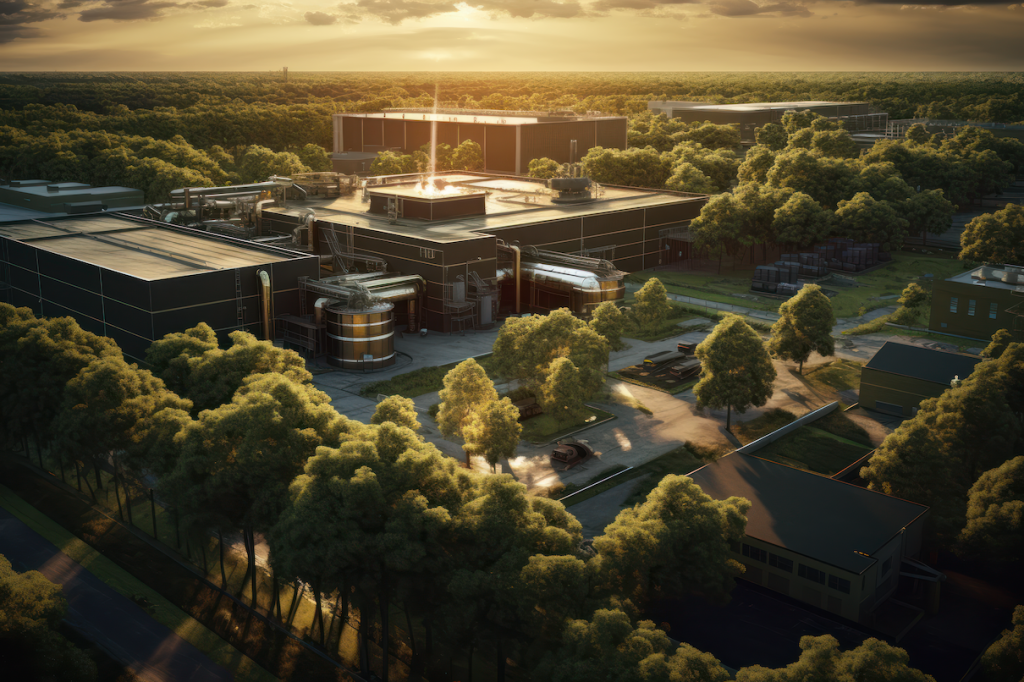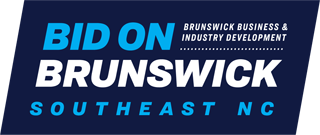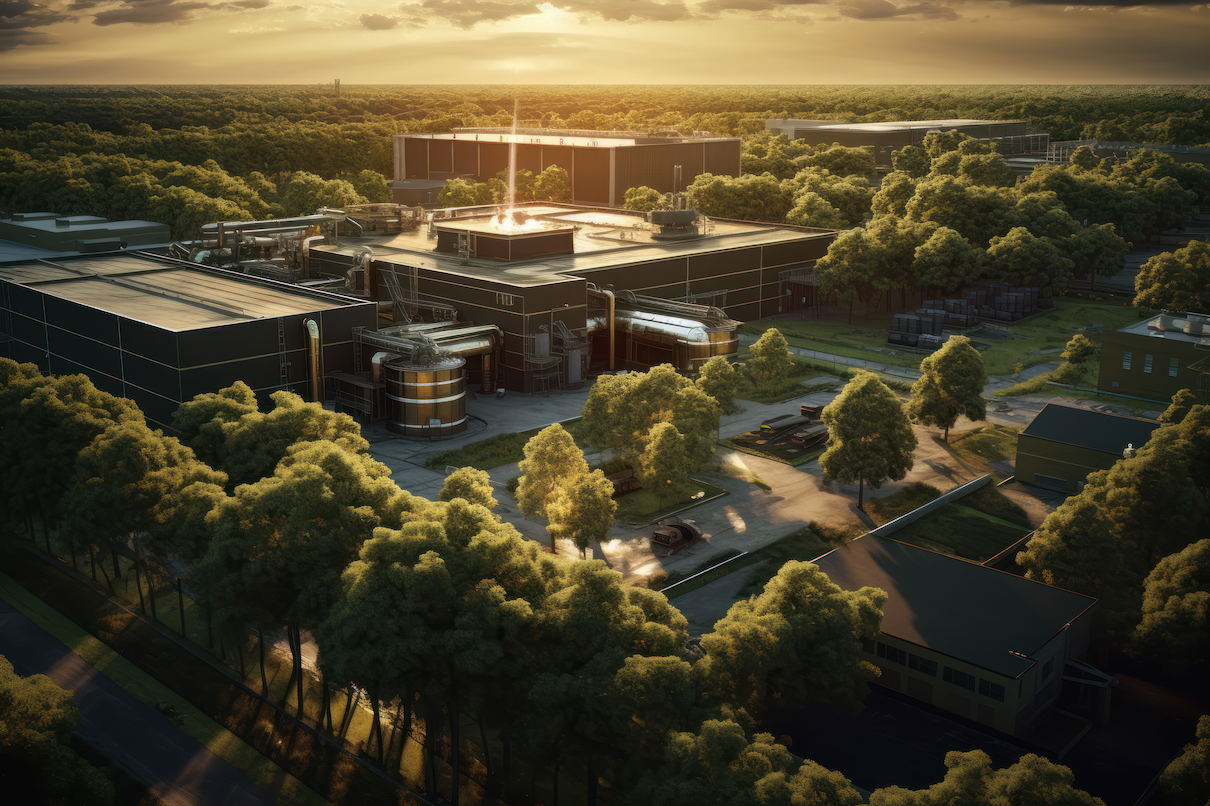Key Takeaways:
| Focus Area | What To Do |
| Business Needs Alignment | Understand and align your business objectives with location prerequisites. |
| Market Insights Utilization | Leverage demographic, psychographic, and market trend analysis for informed decisions. |
| Comprehensive Site Evaluation | Assess accessibility, visibility, and regulatory compliance of potential sites. |
| Financial Feasibility | Conduct thorough cost analysis and ROI projections to ensure financial viability. |
| Expert Guidance & Local Resources | Engage with Brunswick BID and harness local partnerships for successful site selection. |
Introduction to Commercial Site Selection in Brunswick County
Are you a business owner or entrepreneur looking to expand or relocate your enterprise?
The success of your business and its impact on the local economy hinges on one critical decision: choosing the right commercial site. But fear not, for we’re about to embark on a journey through the intricate world of “commercial site selection” in Brunswick County – a journey that could define the future of your business.
Imagine this – you’ve poured your heart and soul into your business, and now it’s time to take it to the next level. You want to find that perfect spot, that strategic location that will not only meet your business needs but also captivate your target audience. It’s a quest filled with possibilities and challenges, and the choices you make today will reverberate for years to come.
The desire to make informed decisions, backed by data and expert guidance, is palpable. You want to be equipped with the tools to align your business objectives with the perfect location, tap into market insights to understand your customers better and evaluate potential sites meticulously. You yearn for a financial feasibility assessment that guarantees the sustainability of your venture, and you crave the support of local resources and partnerships to navigate this complex journey.
So, what’s the first step on this exciting path towards informed commercial site selection? It’s simple – read on.
We’re here to guide you through each stage of this journey, from understanding your business needs to harnessing local partnerships, and everything in between. The goal is clear: to empower you with the knowledge and resources you need to make the right decision for your business and for the flourishing community of Brunswick County.
Join us as we delve into the art and science of commercial site selection.
Your journey begins now.
Understanding Your Business Needs
Before diving into the site selection process, it’s crucial to have a clear understanding of your business needs.
Aligning Business Objectives with Location Prerequisites
- Nature of Business: The type of business will influence the location requirements. For instance, a retail outlet may prioritize high foot traffic areas, while a manufacturing unit might need proximity to suppliers and transportation hubs.
- Target Audience: Knowing your target audience and where they are located is crucial. Demographic analysis can provide insights into the best locations to reach your audience.
- Accessibility: Ensure the location is accessible to both your customers and employees.
- Growth Prospects: Consider the long-term growth prospects of the location. Is there room for expansion?
Discover more on aligning your business objectives with location prerequisites here.

Leveraging Market Insights
To make an informed decision on site selection, leveraging market insights is indispensable.
Utilizing Demographic, Psychographic, and Market Trend Analysis
- Demographic Analysis: Understanding the demographic makeup of different areas can help in identifying the perfect location for your business.
- Psychographic Analysis: Delve into the lifestyle, behavior, and preferences of the population in prospective areas.
- Market Trend Analysis: Stay updated with the market trends and how they might affect your business in different locations.
Learn more about market analysis for site selection here.
Site Evaluation Essentials
Evaluating potential sites is a critical step to ensure that the chosen location aligns with your business objectives.
Accessibility, Visibility, and Compliance Checks
- Accessibility: Assess the ease of access for both customers and employees. Look for well-connected roads, public transportation, and parking facilities.
- Visibility: A location that is easily visible to passersby can attract more customers, especially for retail businesses.
- Compliance: Ensure the site complies with zoning laws, building codes, and other regulatory requirements.
Find more on site evaluation here.
Financial Feasibility Assessment
A thorough financial analysis is crucial to determine the viability of your site selection.
Cost Analysis and Return on Investment Projections
- Initial Investment: Calculate the cost of acquiring the site, construction or renovation, and other initial investments.
- Operational Costs: Estimate the recurring costs such as utilities, maintenance, and lease or mortgage payments.
- Revenue Projections: Based on market analysis and other factors, project the revenue the location can generate.
- ROI Analysis: Assess the return on investment over a defined period to ensure financial sustainability.
Table: Financial Feasibility
| Parameter | Description |
| Initial Investment | Cost of site acquisition and setup |
| Operational Costs | Recurring costs for running the business |
| Revenue Projections | Estimated revenue based on market analysis |
| ROI Analysis | Assessment of financial viability over a defined period |
Explore financial planning tips here.
Expert Guidance through Brunswick BID
Choosing the right commercial site is a complex task that can benefit greatly from expert guidance.
Our Hands-On Support from Initiation to Relocation
- Initiation: We help you start the site selection process with a clear understanding of your business needs and market conditions.
- Evaluation: Our team assists in evaluating potential sites based on a variety of factors including accessibility, visibility, and financial feasibility.
- Selection: With our expertise, we guide you in making an informed decision in selecting the perfect site for your business.
- Relocation: Our support extends to ensuring a smooth transition to your new location.
Learn more about our services here.
Local Resources and Partnerships
Harnessing local resources and establishing partnerships can significantly ease the site selection process and contribute to your business success.
Harnessing Local Partnerships for Successful Site Selection
- Local Authorities: Engage with local authorities to understand regulatory requirements and potential incentives.
- Business Associations: Joining local business associations can provide valuable insights and connections.
- Real Estate Agents: Partner with experienced local real estate agents who have a thorough understanding of the commercial real estate market.
Explore our local partnerships here.
Community and Sustainability: Beyond Business
Engaging with the community and adopting sustainable practices can significantly enhance the reputation and long-term success of your business.
Promoting Community Engagement and Sustainable Practices
- Community Involvement: Engage with the local community through events, sponsorships, and collaborations.
- Sustainable Operations: Adopt eco-friendly practices in operations, waste management, and resource utilization.
- Local Employment: Prioritize hiring locally to contribute to community development.
Read more on community engagement here.
Looking Ahead: Evolving Trends in Site Selection
The commercial site selection landscape is continually evolving with emerging trends and technologies.
How Emerging Trends and Technologies are Reshaping the Commercial Site Selection Landscape
- Technology Adoption: Utilize cutting-edge technologies like Geographic Information Systems (GIS) and Artificial Intelligence (AI) for data-driven site analysis.
- Sustainable Site Selection: Embrace criteria that promote sustainability and environmental responsibility.
- Remote Work Trends: Consider the impact of increasing remote work trends on your site selection strategy.
Table: Evolving Trends
| Trend | Description |
| Technology Adoption | Utilizing GIS and AI for enhanced site analysis |
| Sustainable Site Selection | Embracing eco-friendly criteria in site selection |
| Remote Work Trends | Adapting to the shift towards remote working environments |
Discover more about evolving trends here.
Getting Started with Brunswick BID
Initiating the commercial site selection process with Brunswick BID is a step towards making informed and strategic decisions.
How to Engage with BBID for Your Site Selection Needs
- Consultation: Schedule a consultation to discuss your business needs and site selection objectives.
- Market Analysis: Leverage our market analysis to identify potential sites.
- Site Tours: Arrange site tours to evaluate potential locations first-hand.
- Decision Support: Receive expert guidance in making your final site selection decision.
Learn more about engaging with Brunswick BID here.
Conclusion: The Path Towards Informed Commercial Site Selection
The journey of commercial site selection is intricate but with the right guidance and resources, it can lead to fruitful outcomes for businesses and the community of Brunswick County.
Table: Key Steps Summary
| Step | Description | Learn More |
| Understanding Business Needs | Aligning objectives with location prerequisites | Learn More |
| Market Insights | Leveraging demographic and market trend analysis | Learn More |
| Site Evaluation | Assessing accessibility, visibility, and compliance | Learn More |
| Financial Feasibility | Conducting cost analysis and ROI projections | Learn More |
| Expert Guidance | Engaging with Brunswick BID for support | Learn More |
| Local Resources | Harnessing local partnerships and resources | Learn More |
| Community Engagement | Promoting sustainability and community involvement | Learn More |
So, after this extensive exploration of commercial site selection in Brunswick County, you might be wondering: “What’s the big deal?” Let’s break it down to address the “so what” questions:
- Empowering Businesses: This post been all about empowering businesses, whether big or small, to make well-informed choices. Commercial site selection isn’t just about finding a place to set up shop; it’s about creating a roadmap to success.
- Boosting the Local Economy: Your business doesn’t exist in a vacuum. By choosing the right location, you’re not only ensuring your own prosperity but also contributing to the growth and vitality of Brunswick County’s economy.
- Community Impact: Beyond the financial aspects, your decision can have a profound impact on the community. Engaging with the local community and adopting sustainable practices can enhance your business’s reputation and foster goodwill among residents.
- Staying Ahead of Trends: The commercial site selection landscape is evolving. We’ve discussed trends like technology adoption, sustainability, and remote work. Staying ahead of these trends positions your business for long-term success.
In the grand scheme of things, commercial site selection isn’t just about choosing a location; it’s about shaping your business’s destiny. It’s about becoming a part of something bigger, a thriving community, and a dynamic economy.
At its core, this post has been about helping you, the business owner or entrepreneur, make choices that matter. It’s about recognizing the importance of meticulous planning and informed decision-making.
Why Should You Care?
Because your business deserves the best chance to succeed, and Brunswick County deserves businesses that contribute positively to its growth. By caring about the intricacies of commercial site selection, you’re not just investing in your future; you’re investing in the future of a community.
So, as you embark on your commercial site selection journey, armed with knowledge and guided by the experts at Brunswick BID, remember that your choices matter. Your success is intertwined with the prosperity of this vibrant county.
Thank you for taking this journey with us, and may your business thrive, benefiting both you and the community you call home.
FAQs
1. What is Site Selection in Business?
Site selection in business refers to the process of determining the most appropriate location for a business, considering factors like customer accessibility, cost, logistics, and potential for growth. This decision can significantly impact a business’s operational efficiency and overall success.
2. What are the Criteria for Site Selection?
The criteria for site selection typically include factors such as the target market’s proximity, infrastructure considerations for site selection and logistics, local labor market, costs (including rent, utilities, and taxes), legal and regulatory environment, and the area’s economic stability.
3. What are the Five Principles of Site Selection?
The five principles of site selection encompass: 1) Accessibility to customers and suppliers, 2) Cost-effectiveness, including operational and maintenance expenses, 3) Availability of a skilled workforce, 4) Supportive business environment, including local laws and regulations, and 5) Scalability and flexibility for future growth or changes.
4. What Should You Avoid When Making a Site Selection?
When making a site selection, it is crucial to avoid locations with poor accessibility, high costs that outweigh benefits, limited or non-skilled labor force, unfavorable legal and business environments, and areas with no room for expansion or adaptation to changing business needs.
5. When Should the Site Selection Process Begin?
The site selection process should begin as early as possible in the business planning stage. Early consideration allows for thorough research, evaluation of multiple options, and alignment of the site with business strategy and goals.
6. Why is Site Selection Strategy Needed?
A site selection strategy is needed to ensure that the chosen location aligns with the business’s operational needs, financial goals, and long-term objectives. It aids in minimizing risks, maximizing efficiency, and securing a competitive advantage in the market.

